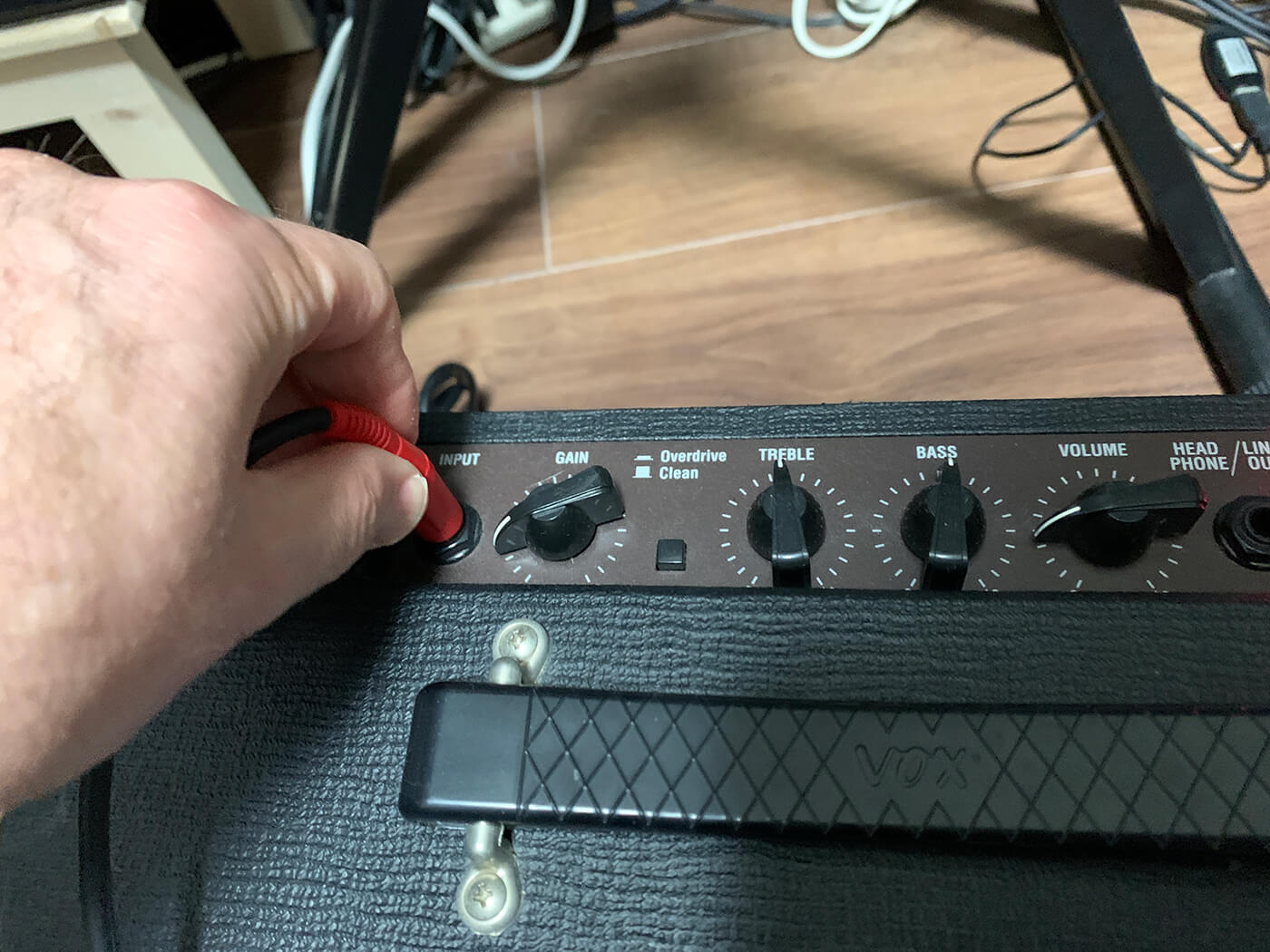How to recreate Fred again..’s “Jungle” bass sound
The British producer is experiencing a meteoric rise in popularity – here’s just one of the ways that he gets creative with audio.

Fred again.. Image: Shirlaine Forrest/Redferns via Getty Images
Few dance music artists this year have made an impact like Fred again.. The 30-year-old producer has gone from strength to strength, with a series of acclaimed records (including one with his mentor, Brian Eno), sell-out arena shows with Four Tet and Skrillex, and enough positivity to power a small country for a week.
Fred again.. is also creatively resourceful, as a recent TikTok video proves. In it, he shows how he made the bass sound in his track, Jungle. It turns out it was a faulty cable recorded through his iPhone. Talk about grabbing hold of that creative spirit. It makes sense though, since the sound he captured was that of mains noise, which usually has a frequency of 50Hz in the UK and Europe and 60Hz in America and Asia. That’s bass right there.
While Fred again.. doesn’t reveal his entire creative process, here’s how you can make a banging bassline starting with the same general principle of recording mains hum.
Here’s the finished bassline in the context of a speed garage track.
Record the source sound
Fred used a wonky audio cable to create his mains hum but if you don’t have a broken cable to hand, use a regular one and touch the other end with a finger. Fred ran his directly into an audio interface – if you can’t get enough gain that way, a guitar amplifier will work nicely.
Next, you’ll need a microphone to capture the audio. In the TikTok clip, Fred says that he used his iPhone and its Voice Memos app to record but any similar app will do the trick. The key is to keep it lo-fi. You can always capture it directly to your DAW from the audio interface – but then you’d lose out on the reamping qualities you get from using a microphone. As the saying goes, the best microphone is the one that’s with you.

Edit loop points in the sampler
After importing the raw audio into your computer, create a MIDI track in your DAW and open a sampler. TAL-Sampler from TAL Software works well but any sampler will do just fine. Record some notes into your DAW to trigger the sample. Next, go into the waveform editing section in your sampler and set your start and end points, as well as loop points. It can be helpful to audition this against a beat so you get a sense of how things sound rhythmically.
Dial in filter and other settings in the sampler
There’s a lot of creative fine-tuning to do to turn this mains hum snippet into a usable bassline. Don’t be afraid to experiment and use a lot of plugins – it’s all about the process.
First, start by lowering the cutoff in the filter section of the sampler to reduce some of those nasty highs. Next, if your sampler can emulate old hardware samplers, like TAL Sampler can, try changing the settings and increasing saturation. Whatever works for you is what’s important here.
Shape the sound with EQ
The mains hum bass is still fairly bright and is also lacking in bass weight. Use an EQ like FabFilter’s Pro-Q to gently shelve off the highs to around 500Hz and then boost a few decibels in the lower bass region of 50-200Hz. Feel free to clean up some of the ultra-low end too. It doesn’t have to be perfect yet; there’s a lot more tone-shaping to come.
Add grit with distortion
The EQ has helped focus the sound and cut out unnecessary frequencies but it’s also taken away some of the excitement. You can bring that back with distortion. A plugin like Arturia’s Filter MS-20 is just the ticket. Dial in a little drive but make sure to focus the distortion on the upper frequencies using the Low Cut knob. You can add some additional low-cut filtering to the sound as well, if you like.
Volume modulation
One of the distinct characteristics of Fred again..’s Jungle bassline is the volume modulation. It pumps in time with the rhythm, adding motion and interest. This also helps the bass get out of the way of the kick, which is programmed in a four-on-the-floor pattern. Flux Pro from Caelum Audio is ideal for quickly setting up volume modulation. Start with the Simple – Sidechain preset and then modify the volume curve to match the rhythm of your bassline. You can, of course, also use sidechain compression to create the same effect.
Two stages of compression
From here on out, it’s all a matter of sound shaping. Try adding various compressors, saturators, and whatever else works to add power to the bass sound. One example is Arturia�’s Comp Diode-609 compressor into Aberrant DSP’s ShapeShifter multiband pulverizer. The compressor holds everything down while ShapeShifter uses a combination of downwards and upwards compression to add rhythmic push and pull to the bassline.
Final equalization
This bass is sounding pretty slick but, after all of the effects processing, some of the bass weight has disappeared. Using the Pultec trick will help bring that back. The original Pultec hardware EQs unusually had both boost and attenuation knobs. By paradoxically boosting and cutting the same low-frequency band, you could get a tight bass bump.
Arturia’s EQ Sitral-295 is not a Pultec emulation but it can pull off the famous bass boost. Cut eight dB at 300Hz and then boost the low shelf liberally until the bass is full and weighty.
Final touches
For the final touch, add a splash of send effects. For reverb, Valhalla Vintage Verb is primed for adding reverbs of any size. As this is a bass sound, keep the reverb short and remove the bass from the reverb tail to avoid cluttering the mix.
Chorus effects can add width and movement, and Arturia’s Delay Eternity works well in this capacity. Finally, a short delay, such as from SoundToys’ Primal Tap, can add the final touch plus some stereo width. As with the reverb, be sure to use the low cut to remove bass from the effect.